

Press Release
Governments announce increased financial support to the global AIDS response
22 June 2022 22 June 2022Geneva, 22 June 2022—Addressing the UNAIDS Programme Coordination Board, governments have begun to pledge new investments to advance the end of AIDS.
The United Kingdom and Germany were among those pledging increased resources to support the work of UNAIDS, the United Nations Joint Programme on HIV/AIDS.
The UK will increase funding to UNAIDS to £8 million per year, up from £2.5 million in 2021. The UK emphasised the importance of sufficient, predictable and timely funding towards enabling UNAIDS to deliver on its mandate.
Germany will increase its funding to UNAIDS this year to 6 million euros, up from 5 million euros before, in commendation of UNAIDS for its work to help maintaining HIV and other health services in conflict situations around the world, including in Ukraine and its neighbouring countries.
UNAIDS is the United Nation’s only Joint Programme, a unique model that brings together UNICEF, UNESCO, UN Women, UNHCR, World Food Programme, UNDP, UNFPA, UNODC, ILO, the World Bank and the World Health Organization. In this way, UNAIDS combines the range of technical expertise, cross-sectoral work and political reach that is needed to end the AIDS pandemic.
Crucially, UNAIDS structure also includes the populations most affected by HIV as an integral part of its activities and governance, so that those most affected by HIV are central to the global response.
The funding levels from all donors last year, 2021, are set out in the online UNAIDS Results and Transparency portal.
The new resources committed by governments are an important step forward in taking forward the world’s efforts to end AIDS. In the past few years, reductions in funding for HIV have risked setting back the AIDS response.
The new announcements of increases could signal the start of new momentum to fill critical funding gaps.
Speaking about the forthcoming seventh replenishment conference, Global Fund Executive Director Peter Sands noted that “to enable the Global Fund to deliver on its objectives we need the full replenishment and we also need UNAIDS to be fully funded. We cannot do it without more money. We cannot magic our way to a better outcome without stepping up resources.”
At the opening of the PCB meeting, UNAIDS Executive Director Winnie Byanyima highlighted the severe strain that underfunding had brought to the AIDS response. She reiterated strong, predictable funding is essential for saving lives and ending the pandemic: “It is far more expensive to not end the AIDS pandemic than to end it.” She reminded delegates what was at stake: “Hundreds of thousands of deaths and millions of new infections, all preventable. The end of the AIDS pandemic at the end of this decade versus an AIDS pandemic that draws on and on.”
Kenya, representing the Africa group, highlighted that countries around the world rely on UNAIDS in order for them to be able to reach the end of AIDS. The Canada constituency remarked that “You at UNAIDS are small but mighty. The foundation you lay for the HIV response is in the data you collect, the expertise and passion of your staff, and the courage of the Secretariat to call out human rights violations.” The Asia Pacific NGO delegation highlighted the importance of including people living with HIV in the Joint Progamme and urged donors to ensure it is fully funded. UNICEF Executive Director Catherine Russell warned delegates that earlier cuts in funding were constraining the ability of the 11 agencies to respond to HIV as needed.
The HIV pandemic is a crisis that claims a life every minute. But it can be ended by 2030 if countries work together to tackle inequalities and are bold in their actions and their investments. The actions needed to end AIDS will help protect the health and rights of everyone, strengthen economic development, and leave the world better prepared for future pandemic risks.

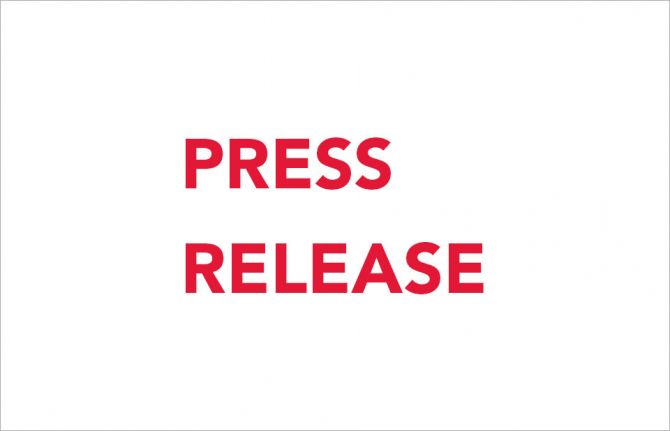
Press Release
Performance report demonstrates how the UN Joint Programme on HIV and AIDS has helped save lives
18 June 2022 18 June 2022GENEVA, 18 June 2022—This year’s UNAIDS performance report demonstrates how the UN Joint Programme on HIV and AIDS has critically contributed to key areas of the global HIV response and to saving lives, even in the face of the severe challenges and disruptions caused by the COVID-19 pandemic and financial shortfalls impacting the global HIV response and UNAIDS.
The report outlines progress, across the 6 regions covered by the Joint Programme in 8 strategy result areas and 5 functions, in ensuring effective and well-coordinated support to countries and communities, resource mobilization, strategic partnerships, strategic information, and effective governance and accountability.
It shows UNAIDS high performance against the plan, measured through quantitative and qualitative data.
UNAIDS critical achievements for countries and communities include:
- UNAIDS helped 15 countries to achieve elimination of mother to child transmission.
- UNAIDS helped 130 countries to adopt oral Pre-Exposure Prophylaxis (PrEP) in their national guidelines.
- UNAIDS helped 28 countries of the Global HIV Prevention Coalition to develop national roadmaps and targets, improving condom needs estimates, scaling up of prevention, including sexual and reproductive health and rights, especially for adolescent girls and women as well as key populations.
- UNAIDS helped promote innovations including self-testing, multi-month dispensing of ART (now adapted in 90% of low- and middle- income countries), and digital solutions for health, worldwide, which have been vital to continuity during service disruptions from the COVID-19 crisis.
- UNAIDS supported 90 countries to improve their enabling environments, including their legal and regulatory frameworks.
- UNAIDS supported the empowerment of women and girls and transformations of unequal gender norms, including through the Education Plus initiative that is building political and public momentum to ensure that all adolescent girls in Sub-Saharan Africa secure access to secondary education and a package of empowerment support.
- UNAIDS contributed to improved HIV-sensitive social protection systems in 66 countries It also helped expand community-led HIV responses including alternative models for their sustainable financing in 10 countries and community-led monitoring in 24 countries.
- UNAIDS helped 380 cities join the Fast Track cities network, and translated political commitments into investments, better policies and programmes for people living with, affected by and at risk of HIV.
- Through its guidance and technical support to Global Fund’s country coordination mechanism in 77 countries, UNAIDS guided more than 80% of Global Fund’s funding requests for evidence-informed prioritization, representing US$ 5 billion in HIV funding, and supportive effective implementation. In addition, UNAIDS catalyzed greater focus and investment on prevention in 30 countries leading to approximately $200million additional Global Fund resources for HIV prevention since 2017, and supported 12 Global Fund strategic initiatives on HIV, resulting in increased funding for condom programming, human rights and gender. UNAIDS close collaboration with the Global fund also helped secure continuity of vital HIV services disrupted by the COVID-19 crisis.
- UNAIDS monitoring and reporting of the impact of COVID-19 on essential services and on peoples’ rights helped worldwide in policy mitigations and in policy reforms.
- UNAIDS brought global attention to the inequalities connecting the HIV and COVID-19 pandemics, including through its leading role in urging equitable access to pandemic-ending technologies, in the People’s Vaccine campaign and in its support for the Accelerated COVID Testing (ACT) initiative.
- Across all its work through UN Joint Teams on AIDS in over 90 countries as part of UN Country responses, UNAIDS fostered dialogues on HIV sensitive issues, finding solutions for people left behind, including in people in closed settings, in humanitarian situations and in mobile and migrant populations. It also promoted and supported the participation and empowerment of communities living with and affected by HIV, including young people, women and girls, and key populations.
Funding shortfalls in the global HIV response continued to limit progress in key areas, especially for vulnerable groups of people. The stark reality at the end of 2020 is that only US$ 21.5 billion (in constant 2019 U.S. dollars) was available for the HIV response in low- and middle-income countries––far short of the US$ 29 billion needed by 2025 to get on track to end AIDS. Likewise, important capacities as a UN Joint Programme have been eroded by the underfunding of the Unified Budget, Results and Accountability Framework. In order to achieve progress, save lives and ensure that people living with or at risk of HIV have access to the services and resources that they need, the global HIV response needs to be fully resourced.
The 2021 UN General Assembly’s Political Declaration on HIV and AIDS and the 2021–2026 Global AIDS Strategy have set an ambitious agenda ahead. This includes the global AIDS 2025 targets of 95-95-95 and 10-10-10, developed by UNAIDS, aiming at removing punitive laws and policies and reducing stigma, discrimination, gender inequalities and violence that hamper access to HIV services. Only through bold and coordinated action to tackle inequalities can the world’s 2025 targets be met.
For more information, see UNAIDS Results and Transparency Portal, and read the 2020–2021 UNAIDS Performance Monitoring Report here: Executive Summary, Strategy Result Area and Indicator Report, Regional and Country Report, Organizational Report, UBRAF Indicators Scorecard.
UNAIDS
The Joint United Nations Programme on HIV/AIDS (UNAIDS) leads and inspires the world to achieve its shared vision of zero new HIV infections, zero discrimination and zero AIDS-related deaths. UNAIDS unites the efforts of 11 UN organizations—UNHCR, UNICEF, WFP, UNDP, UNFPA, UNODC, UN Women, ILO, UNESCO, WHO and the World Bank—and works closely with global and national partners towards ending the AIDS epidemic by 2030 as part of the Sustainable Development Goals. Learn more at unaids.org and connect with us on Facebook, Twitter, Instagram and YouTube.

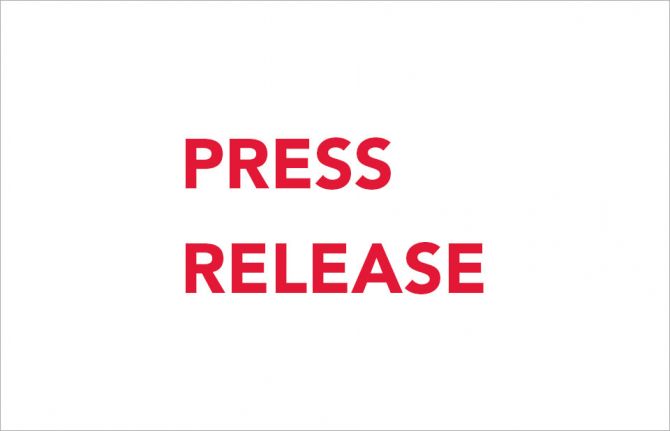
Press Release
UNAIDS reports on the steps taken in building a safe, equal and empowering workplace
16 June 2022 16 June 2022GENEVA, 16 June 2022—In advance of the meeting of the UNAIDS Programme Coordinating Board taking place 21-24 June, UNAIDS is reporting publicly on the steps taken to date to strengthen accountability, counter harassment and build a safe, equal and empowering workplace.
Human rights, equality and dignity are at the heart of UNAIDS mission and are fundamental to its operations. In 2018, an independent expert panel underscored the need to address the organizational systems and culture of the time that had failed to tackle unacceptable behaviour of some employees. UNAIDS put in motion a Management Action Plan and has continued to work to ensure that sexual harassment and all other forms of abusive conduct are addressed, and that victims are provided with adequate support and effective complaint handling mechanisms.
“Ensuring that UNAIDS is a safe, equal and empowering workplace has been my top priority from my arrival,” said Executive Director Winnie Byanyima. “The independent expert panel report of 2018 showed that UNAIDS systems, culture and leadership had got it wrong. I have been determined that past failings are addressed by delivering justice in cases and by continuing to transform our systems and culture to ensure that UNAIDS reflects the values we espouse.”
The process of transformation of systems and culture to ensure a safe, equal and empowering workplace has included: strengthening the UNAIDS Secretariat’s capacities and systems for accountability; ensuring the organization’s duty of care responsibilities to its staff are being met; and advancing feminist and anti-racist leadership principles in all UNAIDS work.
The set of actions that have been taken by UNAIDS include the following:
- The Culture Transformation Process, now in its third year, which has facilitated development of Feminist Principles for UNAIDS and an Anti-Racist and Intersectional Feminist organizational development framework. The positive change brought about through these actions has been recognised by staff, the Programme Coordinating Board, and by UNAIDS international partners.
- The launch of a multi-year Respect Campaign to enhance awareness for prevention and early action to ensure zero tolerance against abusive conduct.
- The establishment of a staff well-being support service with a full-time counsellor for staff wellbeing and mental health and an externally sourced global service provider .
- The launch of the first benchmarked Global Staff Survey at the Secretariat in more than a decade, measuring UNAIDS against peer organizations and gathering real-time data about issues staff are facing and how staff experience the organization. Every unit develops and implements a follow-up action plan.
- The strengthening of the independence of the UNAIDS ethics function, and the establishment of an Independent External Oversight Advisory Committee of the Board.
- The introduction of a strengthened and expanded policy on preventing and addressing harassment, sexual harassment and abuse, discrimination and other forms of abusive conduct, drawing on best practice in UN and other entities, and accompanied by mandatory training for all staff.
- The strengthening of the investigation function and ensuring that measures are taken to protect victims, whistleblowers and witnesses. UNAIDS signed a new Memorandum of Understanding with the WHO/IOS investigation service, which governs all UNAIDS investigations and includes provisions to ensure that investigations are carried out expeditiously.
- The placement of the Integrity Hotline on the UNAIDS website, including a QR code option, to facilitate complaints to be made by anyone using the online platform, email or phone.
- Enhancing transparency by presenting an annual report on disciplinary and other corrective action taken. The report contains case statistics, case summaries and information on specific actions taken.
These steps forward are not the end of the journey. Further action to strengthen accountability and equality in systems and culture continues.
“Whilst we are moving in the right direction, we will not let up,” said Executive Director Winnie Byanyima, “We still have more to do. We will continue to take necessary measures to ensure a culture of zero tolerance of sexual harassment and abuse, and other forms of misconduct, such as bullying, racism and discrimination across all UNAIDS offices. Justice is what drives me as the leader of UNAIDS, and it is what drives the mission of UNAIDS. The MeToo and Black Lives Matter movements have shown the deep-seated inequalities and injustices within institutions. UNAIDS Global AIDS Strategy focuses on ending inequalities to end AIDS. To do this effectively, we will tackle head on the inequalities and injustices that exist within UNAIDS and the UN system. We will further strengthen our work both on organisational systems and on culture, to ensure safety, equality and empowerment for all.”
UNAIDS
The Joint United Nations Programme on HIV/AIDS (UNAIDS) leads and inspires the world to achieve its shared vision of zero new HIV infections, zero discrimination and zero AIDS-related deaths. UNAIDS unites the efforts of 11 UN organizations—UNHCR, UNICEF, WFP, UNDP, UNFPA, UNODC, UN Women, ILO, UNESCO, WHO and the World Bank—and works closely with global and national partners towards ending the AIDS epidemic by 2030 as part of the Sustainable Development Goals. Learn more at unaids.org and connect with us on Facebook, Twitter, Instagram and YouTube.

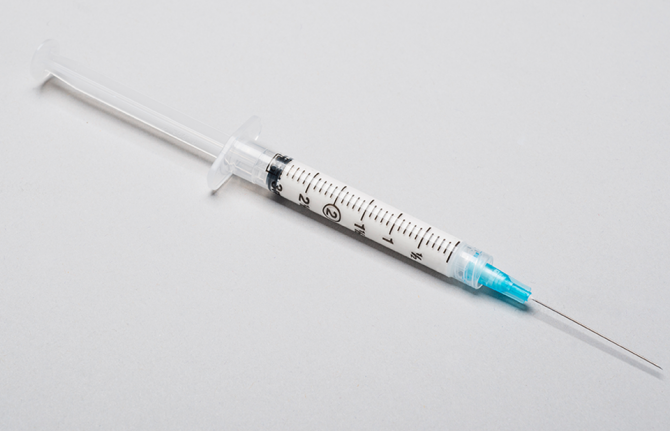
Press Release
UNAIDS responds to Viiv’s announcement on the licensing of long-acting Cabotegravir
27 May 2022 27 May 2022HIV medicine manufacturer Viiv has announced that it is “actively negotiating” a voluntary license with the Medicines Patent Pool on long-acting Cabotegravir.
The World Health Organization will soon issue updated global guidelines on the appropriate application of new long-acting HIV medicines.
Responding to the announcement made by Viiv, UNAIDS Deputy Executive Director a.i. Matt Kavanagh said:
“Last year there were 1.5 million new HIV infections, which shows the urgency of global access to new tools to overcome this pandemic. A successful global HIV response depends on the sharing of technologies. We are encouraged by ViiV’s announcement of negotiations with the Medicines Patent Pool, which has followed engagement by UN partners, financing agencies, civil society, and others. The announcement is an important sign of progress toward affordable global access to this technology for the HIV response; it now needs to be followed by rapid action, in order to translate promises into medicines.
To have transformative impact as a tool for HIV prevention on the scale needed, it is vital that a license for this long-acting antiretroviral come quickly, with open non-exclusive terms for use and production across the world’s low- and middle-income countries. The licensing agreement should also be accompanied by an effective transfer of a technology package, to facilitate quality-assured manufacturers around the world to produce the medicines as soon as possible. There is an urgent need for large-scale production to get underway in Africa, Asia, Latin America and beyond, as soon as possible, to minimize the further wait for affordable products where they are most needed.
Because generic manufacturing will take time to get running, even once a license is agreed, it is also key that ViiV name an interim price that is affordable for low- and middle-income countries.
Those who need new HIV prevention tools most are too often those who get access last — but this need not happen.
We can, as promised, end AIDS as a public health crisis by 2030 – if leaders act boldly to address the inequalities which have driven it. Hoarding life-saving science hurts everyone; it perpetuates pandemics. Sharing life-saving science benefits everyone."
UNAIDS
The Joint United Nations Programme on HIV/AIDS (UNAIDS) leads and inspires the world to achieve its shared vision of zero new HIV infections, zero discrimination and zero AIDS-related deaths. UNAIDS unites the efforts of 11 UN organizations—UNHCR, UNICEF, WFP, UNDP, UNFPA, UNODC, UN Women, ILO, UNESCO, WHO and the World Bank—and works closely with global and national partners towards ending the AIDS epidemic by 2030 as part of the Sustainable Development Goals. Learn more at unaids.org and connect with us on Facebook, Twitter, Instagram and YouTube.

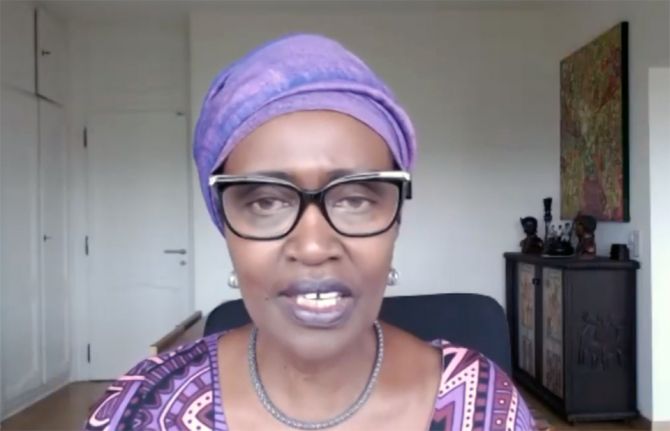
Press Release
World Health Assembly: UNAIDS urges leaders to tackle inequalities and fully embrace human rights to beat emerging pandemics
24 May 2022 24 May 2022GENEVA, 24 May 2022— At the seventy-fifth World Health Assembly, taking place in Geneva, Switzerland, UNAIDS has urged leaders to tackle the global inequalities that drive pandemics such as HIV and COVID-19. UNAIDS highlighted that respect for everyone’s human rights is essential for achieving health for all.
In her address to the World Health Assembly today, the UNAIDS Executive Director, Winnie Byanyima, urged leaders to urgently prioritize the investments needed to stop the AIDS pandemic as well as better prepare the world for future pandemics and ensure health security for everyone.
“The world remains dangerously unprepared to stop today’s pandemics or prevent those of the future because we lack effective plans to ensure access to health technologies and finance trusted community-led organizations for pandemic response,” said Ms Byanyima. “We can beat pandemics and we can protect the health of all if we are bold in tackling inequalities, if we place human rights at the centre of our response.”
Ms Byanyima’s speech touched on three main areas of pandemic preparedness: access, financing and communities.
Communities: to defeat pandemics and protect the health of all people, we need sufficiently financed community-led organizations providing services, doing outreach and providing trusted information as an integral part of the public health response. Communities, who know the situation on the ground best and have the essential relationships of trust, need to be given the resources and the space to lead.
Access: to end AIDS, beat COVID-19 and stop the pandemics of the future, global access to life-saving, pandemic-ending health technologies is critical. We need to replace intellectual property rules that restrict access to life-saving medicines for people in the Global South with those that require technology sharing. This would open up access to COVID-19 vaccines and treatments and to new emerging long-acting medicines for HIV prevention and treatment, as well as for medicines for other pandemics.
Financing: our collective health security, and the effectiveness of global pandemic responses, requires that we adequately finance them. This includes fully funding the Global Fund to Fight AIDS, Tuberculosis and Malaria. This means too that low- and middle-income countries need to be able to increase health investments through progressive domestic resource mobilization and international solidarity, not be shackled by debt or marginalized in the allocation of the International Monetary Fund’s Special Drawing Rights.
During the World Health Assembly, UNAIDS applauded the progress made in developing a new pandemic preparedness and response instrument and submitted that it should include the following essential substantive elements:
- Placing human rights at the core of pandemic responses.
- Putting communities at the centre, including participation in pandemic preparedness and response architecture at the national, regional and global levels.
- Ensuring access to health technologies and medical countermeasures as public health goods to allow equitable access by all those in need.
- Building people-focused data systems capable of highlighting inequalities.
- Supporting the health workforce, including community health workers on the pandemic front lines.
UNAIDS also warmly congratulated Tedros Adhanom Ghebreyesus on his reconfirmation as Director-General of the World Health Organization during the World Health Assembly. “Congratulations my brother Tedros! We look forward to continuing our work together to ensure health for all,” said Ms Byanyima.
UNAIDS
The Joint United Nations Programme on HIV/AIDS (UNAIDS) leads and inspires the world to achieve its shared vision of zero new HIV infections, zero discrimination and zero AIDS-related deaths. UNAIDS unites the efforts of 11 UN organizations—UNHCR, UNICEF, WFP, UNDP, UNFPA, UNODC, UN Women, ILO, UNESCO, WHO and the World Bank—and works closely with global and national partners towards ending the AIDS epidemic by 2030 as part of the Sustainable Development Goals. Learn more at unaids.org and connect with us on Facebook, Twitter, Instagram and YouTube.

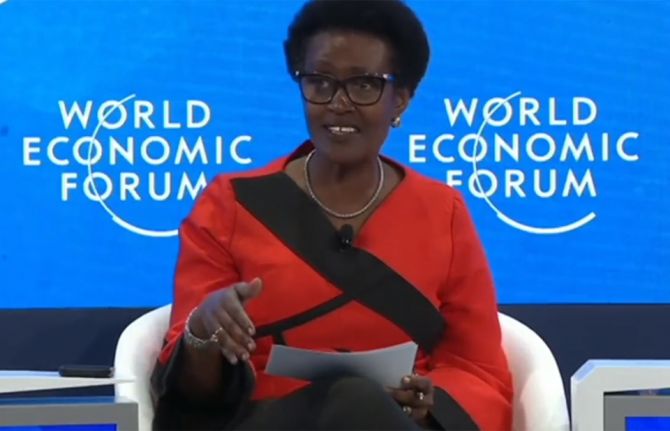
Press Release
UNAIDS tells Davos that economic recovery and health security will fail unless leaders tackle inequality
21 May 2022 21 May 2022GENEVA, 19 May 2022— Ahead of the World Economic Forum’s annual meeting in Davos, Switzerland, the Executive Director of UNAIDS, Winnie Byanyima, has issued an urgent warning that economic recovery and health security plans that do not tackle inequality face catastrophic failure.
Ms Byanyima brings a message from communities on the frontline that rules which exacerbate inequalities are jeopardising recovery, prolonging the AIDS and COVID pandemics, undermining public health, and endangering everyone. Ms Byanyima is calling on leaders to replace intellectual property rules which restrict access to life-saving medicines for HIV, COVID-19 and other pandemics for people in the Global South with ones that require technology sharing; and to replace debt repayment rules which force low- and middle-income countries to slash spending on education and health, hampering vital HIV prevention and treatment programmes, with ones that expand investments in times of crisis.
Today’s unjust global rules have hit Africans hardest, and have also widened the gender inequality gap. Ms Byanyima is calling out their “racist and sexist effects”. During 2020, women were 1.4 times more likely to drop out of the labour force. Every week, 4,200 adolescent girls and young women in sub-Saharan Africa acquire HIV. A year and half since the first doses of a COVID vaccine was delivered, 75% of people in high income countries are fully vaccinated, but under 13% of people in lower income countries are.
“When COVID-19 hit, Africans were told to stand at the back of the queue while rich countries protected themselves with PPE, vaccines and treatment, told that pharmaceutical companies wouldn’t share their technologies because the vaccine was too ‘complicated’ for us to make,” said Ms Byanyima.
Ms Byanyima’s comments came following a visit to Afrigen, a South African company, where scientists have developed a new COVID-19 vaccine using available information to create a vaccine similar to the Moderna vaccine which they plan to distribute at an affordable price across the continent: “I saw state of the art facilities, young scientists and passionate leaders building not just vaccines for COVID but also other diseases, other treatments to make Africa prepared so that we never again have to stand at the back of the queue,” said Ms Byanyima. Yet in spite of the huge profits made, western pharmaceutical companies continue to refuse to share their recipes and technologies for public good. In 2021, Pfizer, BioNTech and Moderna were estimated to have made pre-tax profits of $34 billion.
UNAIDS is warning that this pattern of exclusion looks set to be repeated in access to new “long acting” HIV medicines coming on stream. This new set of breakthrough HIV medicines (available for prevention now and set to be available for treatment in the near term) are taken every few months instead of every day, and could, if they are made available at scale as they are rolled out, help save many lives and help end the AIDS pandemic. But high prices and monopolies are set to keep many people in low- and middle-income countries locked out.
There is an urgent need to reform rules on the protection of intellectual property that have failed the world in these pandemics, so that access to life-saving science is no longer dependent on the passport people hold or the money in their pocket. It is possible to end the AIDS pandemic, beat COVID-19, and stop the pandemics of the future, if biomedical breakthroughs get to all those who need them most. If leaders act on access to long-acting ARVs, many people who would otherwise have acquired HIV will not, people living with HIV who would otherwise have died of AIDS will not, and the well-being and dignity of people at risk of or living with HIV can be enhanced.
Every minute a life is lost to AIDS. 1.5 million people were newly infected with HIV in 2020. People living with HIV who are active in the fight for equal access to medicines, for debt cancellation, and for health for all, insist that human rights are central to effective pandemic response and public health.
Exclusionary policies hurt everyone, Ms Byanyima is warning: “When people in low- and middle- income countries are excluded from life-saving health technologies for HIV, COVID-19 or other pandemics, let’s be clear that this also causes deaths in rich countries, perpetuates pandemics, and undermines the global economy.”
A successful economic recovery must be inclusive. Debt servicing for all the world’s poorest countries debt represented 171% of all spending on healthcare, education and social protection combined for low-income countries in 2021. Health, education and social protection needs require an urgent cancellation of debts. There is a need too for massive new IMF special drawing rights (SDRs) allocation dedicated to low- and middle-income countries, and a reallocation of resources from the 2021 SDR allocation.
Through debt cancellation and a shift of IMF SDRs, low- and middle- income countries could upscale the investments in health and education that build more equal societies and stop pandemics like AIDS and COVID-19. Through new rules requiring pharmaceutical companies to share the rights and recipes for life-saving, pandemic-ending, medicines, it will be possible to protect the health of everyone. The steps needed to end AIDS and beat COVID-19 provide the pathway to pandemic preparedness. “The only realistic strategy for economic recovery, health security and pandemic preparedness is to be bold in fighting inequality,” says Ms Byanyima.
UNAIDS
The Joint United Nations Programme on HIV/AIDS (UNAIDS) leads and inspires the world to achieve its shared vision of zero new HIV infections, zero discrimination and zero AIDS-related deaths. UNAIDS unites the efforts of 11 UN organizations—UNHCR, UNICEF, WFP, UNDP, UNFPA, UNODC, UN Women, ILO, UNESCO, WHO and the World Bank—and works closely with global and national partners towards ending the AIDS epidemic by 2030 as part of the Sustainable Development Goals. Learn more at unaids.org and connect with us on Facebook, Twitter, Instagram and YouTube.

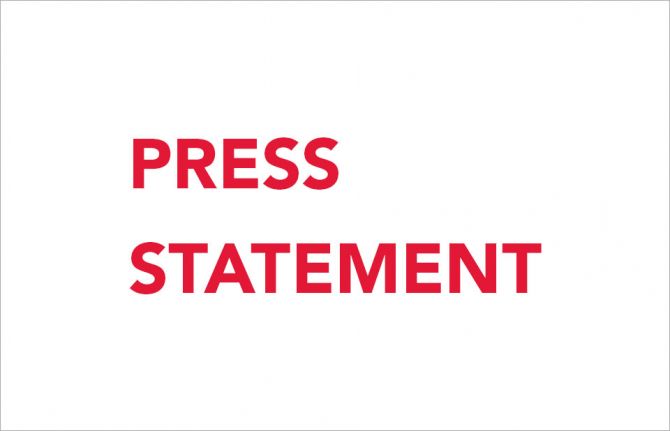
Press Release
UNAIDS warns that stigmatizing language on Monkeypox jeopardises public health
22 May 2022 22 May 2022GENEVA, 22 May 2022—UNAIDS has expressed concern that some public reporting and commentary on Monkeypox has used language and imagery, particularly portrayals of LGBTI and African people, that reinforce homophobic and racist stereotypes and exacerbate stigma. Lessons from the AIDS response show that stigma and blame directed at certain groups of people can rapidly undermine outbreak response.
Since May 13, 2022, an outbreak of Monkeypox has been reported in multiple UN member states where cases are not usually reported. As of May 21, the World Health Organization received reports of 92 laboratory-confirmed cases and 28 suspected cases from 12 Member States not endemic for the disease. A significant portion of the cases have been identified among gay, bisexual, and other men who have sex with men, with some cases identified through sexual health clinics. Investigations are ongoing. WHO notes that available evidence suggests that those who are most at risk are those who have had close physical contact with someone with monkeypox, and that risk is not limited to men who have sex with men.
UNAIDS urges media, governments, and communities to respond with a rights-based, evidence-based approach that avoids stigma.
“Stigma and blame undermine trust and capacity to respond effectively during outbreaks like this one,” said Matthew Kavanagh, UNAIDS Deputy Executive Director a.i. “Experience shows that stigmatizing rhetoric can quickly disable evidence-based response by stoking cycles of fear, driving people away from health services, impeding efforts to identify cases, and encouraging ineffective, punitive measures. We appreciate the LGBTI community for having led the way on raising awareness – and we reiterate that this disease can affect anyone.”
The Monkeypox outbreak illustrates that communities will continue to face threats from viruses, and that international coordination and solidarity is essential for public health as viruses can only be overcome globally.
“This outbreak highlights the urgent need for leaders to strengthen pandemic prevention, including building stronger community-led capacity and human rights infrastructure to support effective and non-stigmatizing responses to outbreaks,” noted Dr. Kavanagh. “Stigma hurts everyone. Shared science and social solidarity help everyone.”
UNAIDS urges all media covering Monkeypox to follow the regular updates being issued by WHO.
UNAIDS
The Joint United Nations Programme on HIV/AIDS (UNAIDS) leads and inspires the world to achieve its shared vision of zero new HIV infections, zero discrimination and zero AIDS-related deaths. UNAIDS unites the efforts of 11 UN organizations—UNHCR, UNICEF, WFP, UNDP, UNFPA, UNODC, UN Women, ILO, UNESCO, WHO and the World Bank—and works closely with global and national partners towards ending the AIDS epidemic by 2030 as part of the Sustainable Development Goals. Learn more at unaids.org and connect with us on Facebook, Twitter, Instagram and YouTube.


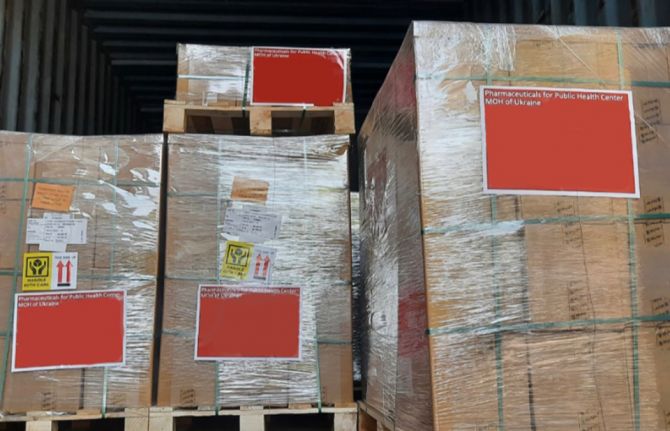
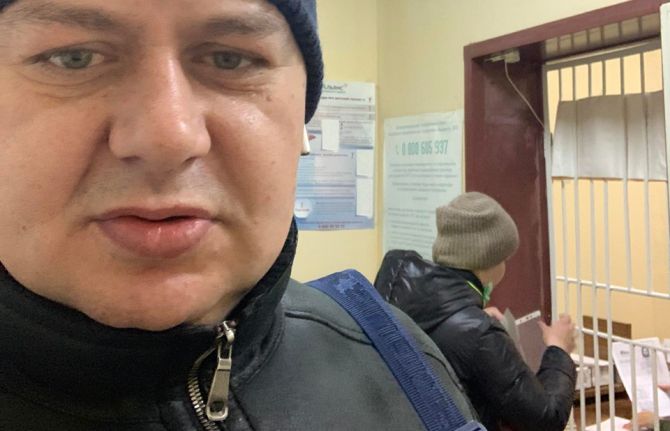
Press Release
UNAIDS warns that the war in Ukraine risks a humanitarian catastrophe for people living with and affected by HIV
13 April 2022 13 April 2022Urgent call issued for a dramatic upscaling of international support for the heroic efforts of civil society-led networks to reach people with life-saving HIV treatment
GENEVA, 13 April 2022—The war in Ukraine has resulted in the destruction and disruption of health services and logistical supply chains that hundreds of thousands of people living with and affected by HIV depend on for survival. More than a quarter of a million Ukrainians are living with HIV, and lack of access to antiretroviral therapy and prevention services would mean a wave of deaths and risks a resurgence of Ukraine’s AIDS pandemic. The community-led networks which are vital to maintaining life-saving services need an urgent upscaling of international support.
More than 40 health facilities that offered HIV treatment, prevention and care services before the war are now closed and there are various levels of service disruption at other sites. By 11 April, the World Health Organization (WHO) had verified more than 100 attacks on health facilities in Ukraine, while supply routes within the country have been thrown into disarray. The United Nations Children’s Fund reports that attacks on water system infrastructure and power outages have left an estimated 1.4 million people without access to water, while another 4.6 million have only limited access. Meanwhile, the World Bank has said it expects Ukraine’s economy to shrink by 45% this year, posing a dire threat to the maintenance of vital health and social programmes.
An initial delivery of more than 18 million doses of life-saving antiretroviral medicine procured by the United States President’s Emergency Plan for AIDS Relief (PEPFAR) that arrived in Lviv last week is now being distributed in partnership with the Public Health Center of the Ministry of Health of Ukraine and 100% Life, the largest organization of people living with HIV in Ukraine. If they can be delivered to those in need, the medicines are sufficient to cover a six-month supply for all people living with HIV on first-line treatment. This first tranche is part of PEPFAR’s commitment to fund 12-month HIV treatment needs in Ukraine. UNAIDS estimates that 260 000 people were living with HIV in Ukraine before the war broke out, 152 000 of whom were taking daily medication for HIV.
The Global Fund to Fight AIDS, Tuberculosis and Malaria (Global Fund) is also providing emergency funding to ensure the continuity of life-saving HIV and tuberculosis services.
Attention is now on ensuring that the life-saving HIV medicines reach all people in need in time. Civil society organizations are mounting a heroic effort to deliver vital medical supplies and HIV services to people living with and affected by HIV, including to vulnerable populations. They are reaching people in extraordinary challenging locations, despite the huge obstacles. But the civil society organizations on which this delivery and care system depends need further international support to be able to continue their work.
“The situation for people living with HIV in Ukraine is desperate. We are trying to deliver medicines, food and other emergency assistance to people in need, but the work is dangerous and volunteers are putting their lives at risk,” said Dmytro Sherembey, Head of the 100% Life Coordination Council. “If we don’t get more help, I am not sure how much longer we can continue, especially reaching people in the front-line zones.”
UNAIDS, which has released an initial US$ 200 000 in emergency funds to address urgent humanitarian and programme demands in seven cities that have large HIV epidemics (Chernihiv, Dnipro, Kharkiv, Kryvy Rih, Kyiv, Odesa and Poltava), has issued an urgent call to the international community for an additional US$ 2.42 million for civil society organizations providing HIV services in Ukraine and for those receiving refugees affected by HIV in other countries, as part of the wider upscaling needed.
“Civil society organizations and communities of people living with and affected by HIV are the bedrock of the HIV response in Ukraine,” said Winnie Byanyima, Executive Director of UNAIDS. “They urgently require additional financial and logistical support to ensure the continuity of HIV treatment, care and prevention programmes. We urge all donors to be part of enabling this vital service to save lives and prevent a resurgence of the AIDS pandemic in Ukraine.”
It is only because Ukraine’s pioneering response to HIV has been a partnership between public and community-led provision that it has been able to continue to provide for people even through the horrors of war. But the civil society networks, on whose creativity and courage the HIV services depend, require a boost in international support to ensure continued operations at the level required.
Getting medical supplies and services to vulnerable groups of people remains extremely challenging and UNAIDS is working with humanitarian partners in Ukraine and internationally to advance urgent solutions to provide medical and humanitarian support to hundreds of thousands of Ukrainians.
The Alliance for Public Health is working to provide the emergency support needed during the conflict, using minibuses to meet pressing humanitarian needs, including the evacuation of vulnerable populations and the delivery of food and medicines. Communities on the front line of the response are making exceptional efforts to reach people. For example, mobile clinics have been deployed by the Alliance for Public Health to take opioid substitution therapy to people who use drugs in areas where facilities have been forced to close. UNAIDS is also working with the Global Fund and with a UNAIDS Cosponsor, the United Nations Office on Drugs and Crime, to obtain additional supplies of opioid substitution therapy.
The conflict has forced millions of Ukrainians to leave the country and thousands of Ukrainian women and children living with HIV are in need of support in host countries. Civil society networks supported by UNAIDS Cosponsors and partners are helping refugees access antiretroviral therapy in the Republic of Moldova and across the European Union.
WHO has helped to broker a deal with the pharmaceutical company ViiV Healthcare to provide donations of HIV medicines to Czechia, Poland and other European Union countries receiving large numbers of Ukrainian refugees.
UNAIDS is also urging the international community to help refugee accommodation centres strengthen their support for people facing the highest risks, by expanding psychosocial services, HIV treatment and prevention services, and services related to gender-based violence. A UNAIDS Cosponsor, UN Women, has said that reports of sexual abuse and human trafficking in Ukraine indicate a protection crisis. UNAIDS has warned of increased risks for lesbian, gay, bisexual, transgender and intersex people.
Ms Byanyima reaffirmed the United Nation’s call for an end to the war. “The biggest need is for peace”, said Ms Byanyima. “The war in Ukraine must stop—now. Recovery requires an end to this war. And even when it ends there will be so much help needed. Ukrainians living with HIV have been put in grave danger by this war. The civil society-led responder networks for HIV services who risk their lives to save lives need every possible support.”
HIV hotline number in Ukraine: 0800 500 451.
More support for Ukrainian refugees living with HIV can be found on the ART Initiative for Ukrainians Abroad website, which was established in coordination with Ukraine’s Public Health Center. More precise data on the whereabouts and needs of people living with HIV in Ukraine and those forced to flee the country are being collected.
UNAIDS
The Joint United Nations Programme on HIV/AIDS (UNAIDS) leads and inspires the world to achieve its shared vision of zero new HIV infections, zero discrimination and zero AIDS-related deaths. UNAIDS unites the efforts of 11 UN organizations—UNHCR, UNICEF, WFP, UNDP, UNFPA, UNODC, UN Women, ILO, UNESCO, WHO and the World Bank—and works closely with global and national partners towards ending the AIDS epidemic by 2030 as part of the Sustainable Development Goals. Learn more at unaids.org and connect with us on Facebook, Twitter, Instagram and YouTube.
Region/country

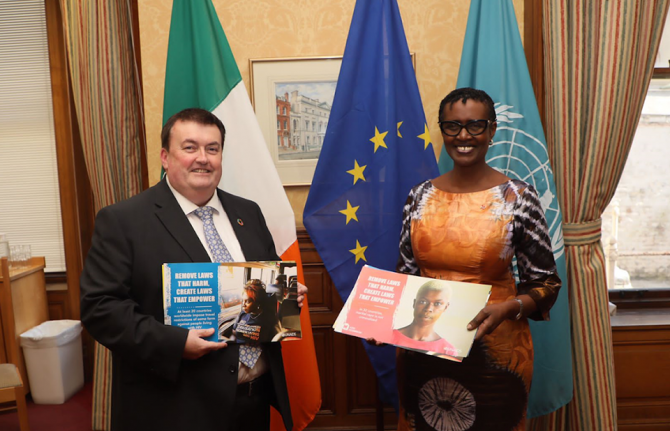


Press Release
On Zero Discrimination Day, Ireland and UNAIDS strengthen their partnership to end the AIDS pandemic
01 March 2022 01 March 2022DUBLIN/GENEVA, 1 March 2022—Ireland has today announced that it is increasing its core funding for UNAIDS from €2.4 million in 2021 to €2.5 million in 2022. The announcement was made at a meeting in Dublin between Ireland’s Minister for Overseas Development Aid and Diaspora, Colm Brophy, and the Executive Director of UNAIDS, Winnie Byanyima.
Ireland has been a partner and supporter of UNAIDS for more than 20 years. It has supported programmes that reduce the impact of HIV among some of the most-at-risk groups, including gay men and other men who have sex with men and young women and girls. In addition to the €2.4 million contribution in 2021, Ireland provided €1 million in support of UNAIDS’ zero discrimination agenda.
“Ireland is a strong leader in the global AIDS response and continues to be a steadfast ally to UNAIDS,” said Ms Byanyima. “This additional financial contribution from Irish Aid is an important signal at a time when the world must step up its efforts to remove laws that harm and instead create laws that empower so that people can receive life-saving and life-changing HIV services.”
This year on Zero Discrimination Day, which is being held under the theme “Remove laws that harm, create laws that empower”, UNAIDS is highlighting the urgent need to take action against discriminatory laws. In many countries, laws result in people being treated differently, excluded from essential services or being subject to undue restrictions on how they live their lives, simply because of who they are, what they do or who they love. Such laws are discriminatory—they deny human rights and fundamental freedoms.
On Zero Discrimination Day, 1 March, we celebrate the right of everyone to live a full and productive life—and live it with dignity and free from discrimination.
UNAIDS
The Joint United Nations Programme on HIV/AIDS (UNAIDS) leads and inspires the world to achieve its shared vision of zero new HIV infections, zero discrimination and zero AIDS-related deaths. UNAIDS unites the efforts of 11 UN organizations—UNHCR, UNICEF, WFP, UNDP, UNFPA, UNODC, UN Women, ILO, UNESCO, WHO and the World Bank—and works closely with global and national partners towards ending the AIDS epidemic by 2030 as part of the Sustainable Development Goals. Learn more at unaids.org and connect with us on Facebook, Twitter, Instagram and YouTube.
Region/country


Press Release
UNAIDS Director of Innovation receives prestigious Social Innovators of the Year award
19 January 2022 19 January 2022GENEVA, 19 January 2022—The Schwab Foundation for Social Entrepreneurship has announced that the Director of Innovation at UNAIDS, Pradeep Kakkattil, has been awarded a 2022 Social Innovators of the Year award. Mr Kakkattil received the prestigious award for his work in creating the Health Innovation Exchange (HIEx), a platform that links innovators, governments and investors and finds solutions to global health-care problems, from COVID-19 diagnosis to the cost of medicines.
“Today, one in every two people around the world don’t have access to basic health care, which is why social innovations and technologies are so critical to scale up services and address the ever-widening inequalities in access to health care,” said Mr Kakkattil.
During the COVID-19 pandemic, innovators and communities have demonstrated the potential of human ingenuity in responding to health challenges. By bringing health system actors to work closely with innovators and communities, HIEx has been able to fast-track the adoption of innovations and facilitate investments for scaling up innovations that particularly address the needs of the most vulnerable.
“HIV and COVID-19 have shown the price the world has to pay if we ignore investing in resilient health systems,” added Mr Kakkattil. “HIEx contributes to build trust between the public and private sectors to help identify challenges and rapidly implement proven technologies and innovations to maximize health impact.”
The announcement was made on the second day of the World Economic Forum’s Davos Agenda 2022, a virtual forum bringing global leaders together to focus on shaping solutions to the world’s most pressing challenges. Mr Kakkattil was among 15 Social Innovators of the Year awardees, who included a Brazilian entrepreneur using hip-hop to turn favela youth away from crime, a Dutch nurse revolutionizing home health care and a park ranger turned tech founder using Minecraft to revive Australia’s indigenous culture.
“The Social Innovators of the Year 2022 represent a new ecosystem of leaders who are driving change and shifting organizations and systems towards a more just, inclusive, sustainable future,” said Hilde Schwab, co-founder and Chairperson of the Schwab Foundation for Social Entrepreneurship.
The foundation was created in 1998 by Klaus and Hilde Schwab to support a new model for social change, combining the values of mission, compassion and dedication with the best business principles to serve the most disadvantaged and build a better society. For the past 20 years, the foundation has supported the world’s leading social entrepreneurs in their efforts to create a more just, equitable and sustainable world.
UNAIDS
The Joint United Nations Programme on HIV/AIDS (UNAIDS) leads and inspires the world to achieve its shared vision of zero new HIV infections, zero discrimination and zero AIDS-related deaths. UNAIDS unites the efforts of 11 UN organizations—UNHCR, UNICEF, WFP, UNDP, UNFPA, UNODC, UN Women, ILO, UNESCO, WHO and the World Bank—and works closely with global and national partners towards ending the AIDS epidemic by 2030 as part of the Sustainable Development Goals. Learn more at unaids.org and connect with us on Facebook, Twitter, Instagram and YouTube.
